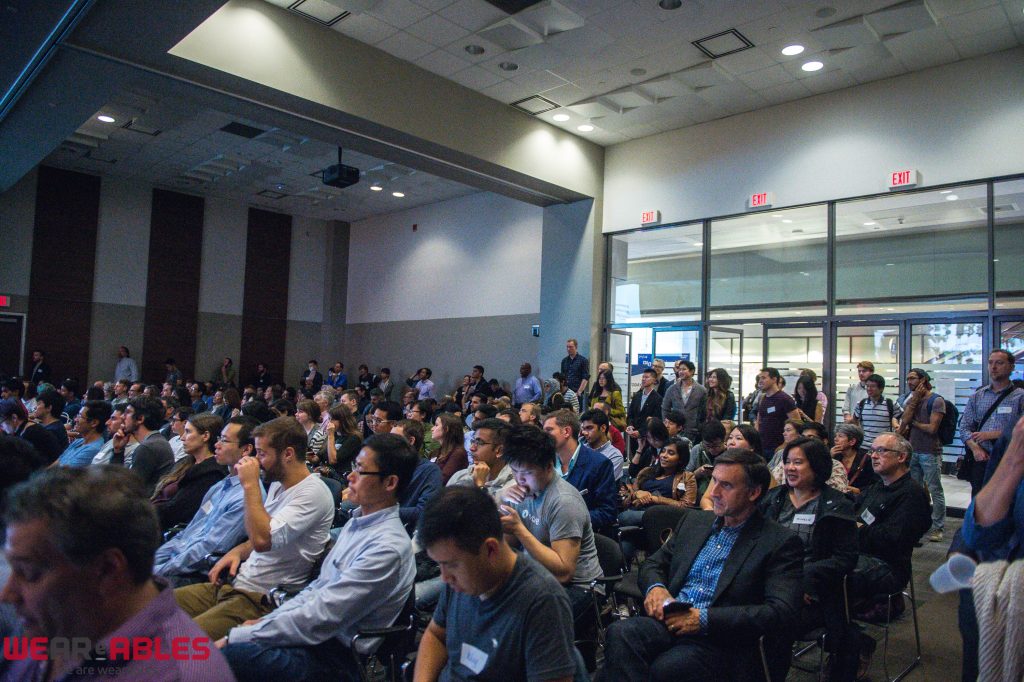We Are Wearables Toronto has covered virtual and augmented reality a few times — whether it’s exploring how virtual reality will change our actual reality and potentially industry-changing product launches, We Are Wearables — which also has chapters in Montreal, Chicago, and Ottawa — has become the event of choice for wearable tech makers to show off the latest advances in this emerging technology.
October’s edition of WWTO, which again looked at augmented and virtual reality, attracted over 1,000 people registered to attend thanks to premiers from a few VR heavyweights; the night included demos of Sony’s PlayStation VR — weeks before its scheduled release — and the world premiere of Sulon Technologies’ Sulon Q, its untethered AR/VR device.
Besides demos from companies leading in the VR space, WWTO wouldn’t be complete without experts speaking on the future of AR and VR technology. “The VR ecosystem will evolve, and we’re witnessing our first generation products,” said Prashant Matta, associate at OMERS Ventures. “The hardware and the experience will only get better and cheaper. We will see robust applications in five years or earlier. By 2025, we’ll have hardware where we see VR in day-to-day life.”
The night included a special edition of two panels — one that explored the “3D-fication” of computing, and the other looking at VR’s impact on art and media.
.@WeAreWearables #TO Panel 3D-ification of Computing Jump into the experience & facilitate ideas to make magic happen #WWTO @TechPORTFOLIO pic.twitter.com/wP7xpXfS1c
— Teresa Sing (@teresa_sing) October 4, 2016
While people often think about virtual reality as creating an immersive experience on-screen, Ramona Pringle, assistant professor and Director of the Transmedia Zone at Ryerson University, gave the example of how the VR game Keep Talking and Nobody Explodes as a medium that integrates both the physical and virtual reality worlds effectively.
“Traditionally, we think of visuals and what we see as the holy grail of media, and with Keep Talking and Nobody Explodes, there are limitations like the clunky headset,” said Pringle. “But other people outside have this manual [while you’re playing], and it’s understanding that this limitation is an affordance, and we can be in multiple spaces at one time.”
Expanding on that point, WWTO founder and BetaKit senior editor Tom Emrich wondered when virtual reality would go beyond just recreating worlds we’re already familiar with, and become more imaginative. “VR itself is a very new experience, and having natural intuitive motions helps with the gameplay,” said John Frangella, co-founder and managing partner of Proto3000.
As VR technology becomes more advanced, the most natural application for the technology is in media and entertainment. But CFC chief digital officer Ana Serrano, who is currently leading a virtual reality documentary lab for diverse creators, said that it’s important to also turn to the past for inspiration. One of the readings she uses in her lab is Char Davies’ Osmose, a 1995 virtual reality exhibition that uses breathing to control the experience. “The 3D environment she created include gorgeous spaces, so from art perspective in designing this program, we need to recapture old VR art and bring it to new VR art because there’s a lot there,” said Serrano.
Photos courtesy Brian de Rivera Simon



